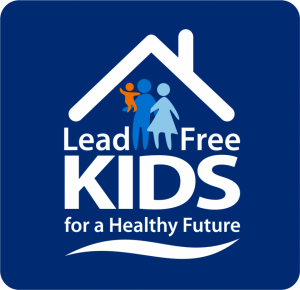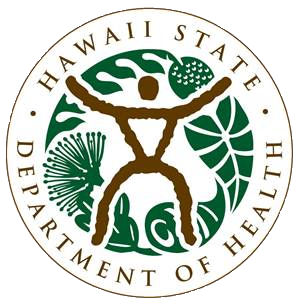WIIN
Participating Schools |
Participating Child Care Facilities |
Test Results |
Stage 1 (2021) testing the drinking water at 106 elementary schools and 113 child care facilities finished in 2021. Click here to read the final report.
Stage 2 (2022) testing the drinking water at 72 additional elementary schools was completed in October 2022. Click here to read the final report.
Stage 3 (2023- 2026) fixture replacement of elementary schools estimated to be completed in February 2026. Click here to view the progress.
Stage 4 (2025) testing the drinking water at 77 middle and high schools are estimated to be completed in November 2025. IN PROGRESS
In October 2022, DOH and DOE were awarded $1.4 million dollars in EPA grant funding to pay for replacement and repair of problematic water infrastructure at the affected schools. Work is underway to replace all water fixtures where test results showed 5 ppb lead or higher and confirm the lead is no longer present with post-fixture replacement water samples.
CLICK HERE TO SEE PROGRESS OF THE FIXTURE REPLACEMENT PROJECT
WIIN Fixture Replacement Project
–
ABOUT THE WIIN TESTING PROJECT
The WIIN project to test the drinking water for lead at Hawaiʻi schools and child care facilities is part of a nationwide program that was established by the Water Infrastructure Improvements for the Nation (WIIN) Act of 2016. As part of the WIIN Act, the US Environmental Protection Agency (EPA) granted states money to test drinking water for lead at schools and child care centers. The project is a collaboration between the Hawaiʻi State Departments of Health, Education, and Human Services. 
PROJECT TIMELINE
STAGE 1:
February – October 2021: Testing at 106 Elementary Schools and 113 Child Care Facilities. COMPLETED.
Click here to read the Stage 1 Final Report.
STAGE 2:
May – September 2022: Testing at 72 Elementary Schools. COMPLETED
Click here to read the Stage 2 Final Report.
STAGE 3:
November 2023 – February 2026 Fixture replacement of Elementary Schools.
Click here to view the progress.
STAGE 4:
October – November 2025: Testing at 77 Middle and High Schools.
WHY TEST FOR LEAD?
Lead is a heavy metal that is naturally present in the environment and has been used for infrastructure, including pipes. When lead gets into human bodies, it can harm the brain and nervous system. Long-term effects of childhood lead exposure include problems with learning, school performance, attention, and behavior as well as anemia and other health problems. Children can be exposed to lead in many ways. Most exposures happen at home and are the result of deteriorated lead-based paint or contaminated soil. The lead transferred onto a child’s hands or toys may be accidentally ingested when the hands or toys are put into their mouths. Eating paint chips or chewing on painted surfaces can also introduce lead into a child’s body. Other lead exposures happen from the mouthing of metal objects, the making of fishing weights, and exposure to certain types of imported spices and ritual products. Visit https://lead.hawaii.gov for more information on lead sources and how to protect your children from lead exposure.  Drinking water contaminated with lead is another way that children can be exposed. While this has been a significant problem in some communities on the mainland, Hawaiʻi has not had the same types of problems with lead contaminated drinking water. Public water systems in Hawaiʻi do not historically have lead contamination. However, it is possible for lead to contaminate drinking water through fixtures and piping within a school, particularly in older buildings. This project will investigate the drinking water taps at risk for lead and identify any problem areas to prevent children from being exposed to lead.
Drinking water contaminated with lead is another way that children can be exposed. While this has been a significant problem in some communities on the mainland, Hawaiʻi has not had the same types of problems with lead contaminated drinking water. Public water systems in Hawaiʻi do not historically have lead contamination. However, it is possible for lead to contaminate drinking water through fixtures and piping within a school, particularly in older buildings. This project will investigate the drinking water taps at risk for lead and identify any problem areas to prevent children from being exposed to lead.
WIIN Corrective Action Options
–
WIIN Frequently Asked Questions
COVID-19 CONSIDERATIONS
All COVID-19 safety procedures will be followed by the project team. For more information, please see: WIIN Project COVID-19 Safety Plan
FOR MORE INFORMATION 
CHILDHOOD LEAD POISONING AND PREVENTION:
- Hawaii Childhood Lead Poisoning Prevention Program (HI-CLPPP) https://lead.hawaii.gov
- Your child’s pediatrician
EPA GUIDELINES FOR THIS PROJECT:
- EPA WIIN Grant website https://www.epa.gov/dwcapacity/wiin-grant-lead-testing-school-and-child-care-program-drinking-water
- EPA’s “3T’s for Reducing Lead in Drinking Water Toolkit” https://www.epa.gov/ground-water-and-drinking-water/3ts-reducing-lead-drinking-water-toolkit
QUESTIONS ABOUT THIS PROJECT IN HAWAII:
- Call the Department of Health’s Hazard Evaluation and Emergency Response (HEER) Office at 808-586-4249
MORE HELPFUL LINKS
DOE Public Schools
DHS Licensed Child Care Facilities
- WIIN Project Flyer – Residential Child Care Facilities
- WIIN Project Flyer – Commercial Child Care Facilities
Press
- DOH-DOE-DHS Joint News Release January 29, 2021
- EPA Press Release September 16, 2020
- Honolulu Star Advertiser Article about the project September 21, 2020

